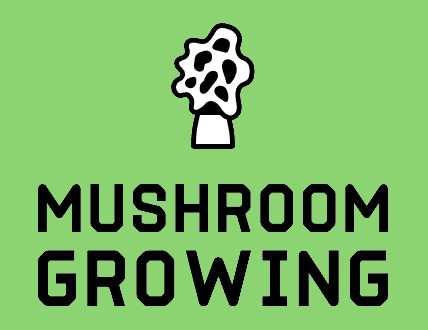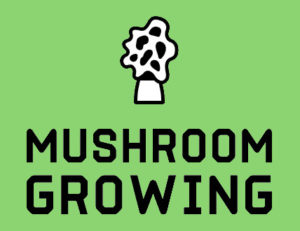What is King Stropharia Mushroom(Garden Giant)
The King Stropharia mushroom((Stropharia rugoso-annulata), also known as Garden Giant or Wine cap mushroom is a reddish-looking edible mushroom. However, as it gets older, the colour might change to golden yellowish.
At harvesting, it can weigh over 8 pounds, thus the "garden giant" name.
This mushroom species is native to North East North America.
The King Stropharia is well regarded for its big fruiting body, good flavour, and simple growth.
Health Benefits of King Stropharia(Garden Giant) Mushroom
The Garden Giant mushroom is an excellent source of selenium, potassium, zinc, copper, manganese, and phosphorus.
So are also rich in fibre, vitamin D2, D3, B1, B2 and B12. , folic acid, pantothenic acid.
It has high protein content (4%). Dietary proteins are essential for the proper growth and development of an individual, almost equivalent to meat, milk, eggs, etc.
King Stropharia mushrooms are known to have antibacterial, anti-inflammatory, and antitumor properties.
Medicinal value of King Stropharia(Garden Giant) Mushroom includes:
· Treat Diarrhea- It's rich in folic acid. A deficiency in folic acid can cause diarrhoea, bleeding gums, and other serious health problems.
· Regulate Blood Pressure- Contains potassium which has an electrolyte that helps regulate the heartbeat and works with other minerals to send nerve signals back and forth to control muscle contractions.
· Lowers Cholesterol- Contains dietary fibre that binds to bile acids in the digestive tract and carries them out of the body with the fibre, lowering blood cholesterol levels.
How to Grow King Stropharia at Home
The Garden Giant Mushroom (King Stropharia) is a member of the 'Strophariaceae' mushroom family. In nature, they are wood decomposers that feed on decaying matter. They are also known as tree stump decomposers because they eat the fallen wood, including tree stumps, coarse hardwood debris, and other similar things
King Stropharia (Garden Giant) fungus and trees have a mutually beneficial symbiosis in which the trees help them to grow. They require high lignin content soil, which is readily destroyed by white-rot fungi. When grown indoors, it requires 50% lignin and little cellulose.
Garden giant mushrooms can be grown all year if the temperature is between 50 and 55 degrees Fahrenheit. To maintain this required temperature in the growing container/bag, you can use a heating pad or heat cables.
This article covers three ways of growing King Stropharia mushrooms.
How to Grow the Garden Giant on Wood Chip
What You Need
- Fresh (up to two months) hardwood chips – Make your own or source from a local mill
- Spawn
- Cardboard
- Straw or leaves
- Water
Step by step Guide
Step 1
Prepare a region by making a rectangular hardwood log frame for the bed (if desired), or you may use logs that have been inoculated with other strains such as Reishi! Try to utilize logs that are approximately 6-8” in diameter. In the spring, look for a shaded location or between rows of vegetable plants.
Step 2
Cover the entire floor of the mushroom garden with flattened cardboard boxes. Saturate the cardboard with water until it is moist. Sprinkle spawn over the surface of the cardboard in small amounts.
Step 3
Add 3” of fresh hardwood chips and sprinkle more spawn on top. Pack the surface to remove any air pockets. Sprinkle lightly with enough water to moisten the chips.
Step 4
Cover with another layer of cardboard or newspaper. Tear the cardboard, so that the moisture can make it to the bottom layer. Sprinkle another layer of spawn onto the cardboard, covering the entire surface.
Step 5
Add a second 3" layer of fresh hardwood chips or grass compost and mix them thoroughly with sawdust spawn. Pack the surface to eliminate any air pockets. Sprinkle sparingly with water to moisten the chips.
Step 6
Cover with straw or leaves to a depth of 1-2” to help preserve moisture and to shade the chips.
TIP: Make sure your bed isn't any deeper than two feet. You don't want the mycelium to become anaerobic and die.
Step 7
Water every day for the first week, every other day for the 2nd and 4th week. Water once a month thereafter unless it receives sufficient rain. After 4-8 months the mushroom mycelium or filaments of the fungus will spread throughout the chips and penetrate the surrounding soil, distributing nutrients to nearby plants. Check back on your patch often. Mushrooms grow extremely fast once they start fruiting, you don’t want to miss them! Your patch may fruit several times a year.
How to Grow the Garden Giant on Straw
What You Need
- Straw from a cereal grain – source from a feed store or farmer
- Spawn
- Cardboard
- Straw or leaves
- Water
- Method
Follow the same instructions for the woodchips, but substitute woodchips for presoaked straw in all steps.
TIP: This method will fruit much faster because straw is not as dense as woodchips.
How to Grow the Garden Giant In A Container
This method is good as it evades earthworms and those with limited outdoor space
What You Need
- Presoaked straw or woodchips, or mix the two substrates
- Container: Plastic and drill holes at the bottom for drainage
- A cardboard box lined with a trash bag (will need drainage holes in the bottom)
- Black nursery pots, with holes too at the bottom
- Spawn
- Water
- Potting soil, and a handful of your native soil
Method
Step 1
Presoak the substrate the day before.
Step 2
Drain the substrate.
Step 3
Mix the spawn with the substrate really well.
Step 4
Fill your container with the spawned substrate. Pack it well. Leave two inches at the top for potting soil layer.
Step 5
Water gently so you are not washing the spawn down to the bottom of the container. Water every day for the first week, every other day for the 2nd and 4th week. Water once a week after that.
Step 6
After a few weeks, the entire container should be colonized with the stringy, filamentous mycelium.
Add 1-2 inches of the potting soil to cover the surface.
Then case the container so as not to disturb the growth and to allow fruiting.
Step 7
Water and maintain humidity by covering the whole area with a clear plastic bag that has holes in it.
Harvesting your King Stropharia Mushroom
It is important to regularly mist the mushrooms to prevent them from drying. It's important that the baby mushrooms stay hydrated at all times. You should mist the mushrooms occasionally but not constantly as they grow larger. Don't water too much may lead to bacteria growth and mushroom decay.
Mushrooms generally double in size every day. Pick just as the mushrooms start to slow or stop doubling in size, and do not water before picking.
Tip: The deeper you make your bed, the bigger those buttons will be.
How to store your King Stropharia Mushroom
Store the fresh mushrooms in a loosely closed paper bag to prevent them from drying out fast.
Alternatively cut them into slices and freeze them in water. They can keep for 6 months to 1 year in the freezer.
Conclusion
Growing King Stropharia mushrooms is easy to do with the right materials. Follow the steps and you will be able to grow and pick your own mushrooms in no time!
Have you grown King Stropharia mushrooms? Do you harvest them frequently or let them grow to full size?
Tell us about your experience in the comments below!


would be a lot cooler if you add how to make the spawn in the first place! but instructions are clear